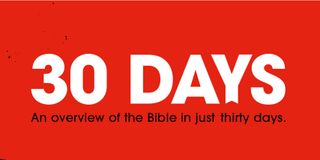'Crazy Love'
Introduction
Francis Chan’s mother died giving birth to him. The only affection he can remember receiving from his father lasted about thirty seconds when he was on the way to his stepmother’s funeral aged nine. When he was twelve, his father also died. Francis cried, but also felt relieved.
Francis is now a pastor. He and his wife, Lisa, have seven children. When his children were born, his own love for his children and his desire for their love was so strong that it opened his eyes to how much God desires and loves us. He said, ‘Through this experience, I came to understand that my desire for my children is only a faint echo of God’s great love for me and for every person he made… I love my kids so much it hurts.’
Calling his first book Crazy Love, he wrote, ‘The idea of Crazy Love has to do with our relationship with God. All my life I’ve heard people say, “God loves you.” It’s probably the most insane statement you could make to say that the eternal Creator of this universe is in love with me. There is a response that ought to take place in believers, a crazy reaction to that love. Do you really understand what God has done for you? If so, why is your response so lukewarm?’
The word ‘zeal’ implies an intense or passionate desire. It can be misdirected, but as Paul writes, it is right to be zealous provided that the purpose is good (Galatians 4:18). Elsewhere he says, ‘Never be lacking in zeal’ (Romans 12:11). Perhaps a good modern translation of the word ‘zeal’ is ‘crazy love’.
Psalm 69:9
… zeal for your house consumes me,
and the insults of those who insult you fall on me.
Commentary
‘Crazy love’ for God’s house
David loves God so much that it feels like anyone insulting God is insulting him. It’s painful to hear people blaspheming God: ‘The insults of those that insult you fall on me’ (v.9b).
David writes, ‘… zeal for your house consumes me’ (v.9a). He was so passionate about God’s house because that was the symbolic place of God’s presence with his people. The Message explains the zeal he expresses in this verse: ‘Because I’m madly in love with you’ (v.9a, MSG).
These words are applied by the disciples to Jesus when he cleanses the temple (John 2:17). Out of zeal for God’s house, Jesus drove off those who were trying to profit from a place of worship, taking advantage of those who wanted to draw near to God.
David is passionate about not bringing God’s name into disrepute. He does not want anyone to be disgraced because of him: ‘Don’t let those who look to you in hope be discouraged by what happens to me’ (Psalm 69:6, MSG). He knows his folly and guilt – as I know mine: ‘God, you know every sin I’ve committed; My life’s a wide-open book before you’ (v.5, MSG). David is concerned that this should not bring dishonour to God’s house.
Today, God’s house – the temple – is Christ and his body, his church (1 Peter 2:5). There is nothing wrong with being passionate about the church. Be zealous to see God’s name honoured in his church today.
Personally, I am inspired when I see a zeal for God’s house – a passion in worship, a ‘leaning in’ to the talks, an amazing welcome for every new person.
Passion is inspiring and infectious. We need more crazy love in the church today.
Prayer
Lord, consume me with zeal for your name and your church.
John 21:4–19
4 Early in the morning, Jesus stood on the shore, but the disciples did not realise that it was Jesus.
5 He called out to them, ‘Friends, haven’t you any fish?’
‘No,’ they answered.
6 He said, ‘Throw your net on the right side of the boat and you will find some.’ When they did, they were unable to haul the net in because of the large number of fish.
7 Then the disciple whom Jesus loved said to Peter, ‘It is the Lord!’ As soon as Simon Peter heard him say, ‘It is the Lord,’ he wrapped his outer garment round him (for he had taken it off) and jumped into the water.
12 Jesus said to them, ‘Come and have breakfast.’ None of the disciples dared ask him, ‘Who are you?’ They knew it was the Lord. 13 Jesus came, took the bread and gave it to them, and did the same with the fish. 14 This was now the third time Jesus appeared to his disciples after he was raised from the dead.
15 When they had finished eating, Jesus said to Simon Peter, ‘Simon son of John, do you love me more than these?’
‘Yes, Lord,’ he said, ‘you know that I love you.’
Jesus said, ‘Feed my lambs.’
16 Again Jesus said, ‘Simon son of John, do you love me?’
He answered, ‘Yes, Lord, you know that I love you.’
Jesus said, ‘Take care of my sheep.’
17 The third time he said to him, ‘Simon son of John, do you love me?’
Peter was hurt because Jesus asked him the third time, ‘Do you love me?’ He said, ‘Lord, you know all things; you know that I love you.’
Jesus said, ‘Feed my sheep. 18 Very truly I tell you, when you were younger you dressed yourself and went where you wanted; but when you are old you will stretch out your hands, and someone else will dress you and lead you where you do not want to go.’ 19 Jesus said this to indicate the kind of death by which Peter would glorify God. Then he said to him, ‘Follow me!’
Commentary
‘Crazy love’ for Jesus
This is the third time Jesus has appeared to his disciples (his fourth including Mary Magdalene) (v.14).
Jesus appears in the ordinariness of simple daily life. You do not necessarily need to do extraordinary things. Jesus meets you wherever you are. Peter is fishing. Six of the disciples join him. Jesus tells them where to catch fish and then cooks breakfast for them. Here is Jesus risen from the dead – the one through whom the whole universe came into being – saying to his friends, ‘Come and have breakfast’ (v.12). The God who is revealed in Jesus Christ is life-affirming and such fun!
When John recognised Jesus he exclaimed to Peter, ‘It is the Lord!’ (v.7a). Peter is so filled with excitement, enthusiasm and zeal to get to Jesus as quickly as he can that ‘he wrapped his outer garment around him (for he had taken it off) and jumped into the water’ (v.7b).
Sometimes in our enthusiasm and zeal we may do some rather crazy things. But what matters is a heart of love and zeal for Jesus. Peter’s eyes were riveted on Jesus. All he wanted was to be with Jesus.
In Jesus’ conversation with Peter after breakfast, we see what it means to have this passionate love for Jesus:
Supreme love
Jesus said to Simon Peter, ‘Simon son of John, do you truly love me more than these?’ (v.15). ‘These’ may refer to his fishing gear or the other disciples. Whatever it means, Jesus was calling him to make his love for Jesus his supreme love. Our love for Jesus should be more than our love for anything else.
Peter’s zeal had not been without its obstacles. He had denied Jesus three times, so Jesus gives him the opportunity to affirm his love three times. Three times Peter tells Jesus, ‘I love you’ (vv.15–17).
Sacrificial love
Jesus hints to Peter that his love and zeal for Jesus and his church is going to be costly. Indeed, it would cost Peter his life. Jesus says to him, ‘“When you are old you will stretch out your hands, and someone else will dress you and lead you where you do not want to go.” Jesus said this to indicate the kind of death by which Peter would glorify God’ (vv.18–19). This is the earliest evidence for the martyrdom of Peter by crucifixion. To be a follower of Jesus is a dangerous undertaking.
When Peter is told this he turns, sees John and asks about his future. In this intimate moment with Jesus, Peter is distracted by comparison with John. Jesus politely tells him to mind his own business – something worth remembering when we are tempted to compare ourselves with others.
Servant love
Each time Peter tells Jesus ‘I love you’, Jesus tells Peter, ‘Feed my lambs… Take care of my sheep… Feed my sheep’ (vv.15–17). Peter can only guide, nourish and be responsible for people if he loves Jesus passionately.
Then Jesus says to Peter very simply, ‘Follow me!’ (v.19). This crazy love for Jesus means following his example of love. Jesus showed the supreme example of servant love. He said, ‘Greater love has no one than this, to lay down one’s life for one’s friends’ (15:13). He gave a very practical example of what this kind of servant love involved, when he washed the disciples’ feet (John 13). It is a commitment to help people, whatever we feel about them, to grow in their love for Jesus, not seeking to control them but to liberate them.
Jesus calls you to the same kind of love. Express your passionate love for Jesus by a passionate love for other people, giving yourself to take care of his sheep.
Peter was willing to make Jesus the supreme love of his life; he was willing to pay the price and to follow in his footsteps of servant love. He loved the one who did so many things in his brief life on earth that ‘if every one of them were written down… the whole world would not have room for the books that would be written’ (21:25).
Prayer
Lord, help me to love you as Peter did – to be zealous for you. Help me to feed your lambs, take care of your sheep and be willing to pay the price, whatever it is, to follow you to the end.
2 Samuel 2:26
Abner called out to Joab, ‘Must the sword devour for ever? Don’t you realise that this will end in bitterness?’
Commentary
‘Crazy love’ for unity
With the death of Saul, Israel and Judah were divided. Abner called out to Joab, ‘Are we going to keep killing each other till doomsday? Don’t you know that nothing but bitterness will come from this?’ (2:26, MSG). This cry has a very modern ring as we see the continued turbulence and division in the Middle East.
‘The war… lasted a long time’ (3:1). ‘Then Abner sent messengers on his behalf to say to David, “Whose land is it?”’ (v.12). Again, this is a question still asked today.
Abner went on to say, ‘Make an agreement with me, and I will help you bring all Israel over to you’ (v.12). Eventually this happened and for a time, at least, the land enjoyed unity.
Disunity is so destructive. We see it in the Middle East today. We see it in the church today. We should be passionate for unity.
Prayer
Lord, I pray for a peaceful and just solution in the Middle East. Help me also to be passionate in pursuing peace, unity and reconciliation in your church.
Pippa adds
2 Samuel 3:14–16 says:
‘Then David sent messengers to Ish-Bosheth son of Saul, demanding, “Give me my wife Michal, whom I betrothed to myself for the price of a hundred Philistine foreskins.” So Ish-Bosheth gave orders and had her taken away from her husband Paltiel son of Laish. Her husband, however, went behind her, weeping behind her all the way to Bahurim. Then Abner said to him, “Go home!” So he went back.’
I know Michal was legally betrothed to David, but I’m not sure this is the best pastoral decision. Her poor husband, Paltiel, seemed really upset. Michal wasn’t consulted and David hardly needed any more wives, he already had at least six (2 Samuel 3:2–5). I think she would have been much happier if she’d been left with Paltiel.
Thought for the Day
Jesus meets you wherever you are.

App
Download The Bible with Nicky and Pippa Gumbel app for iOS or Android devices and read along each day.

Subscribe now to receive The Bible with Nicky and Pippa Gumbel in your inbox each morning. You’ll get one email each day.

Podcast
Subscribe and listen to The Bible with Nicky and Pippa Gumbel delivered to your favourite podcast app every day.

Website
Start reading today’s devotion right here on The Bible with Nicky and Pippa Gumbel website.
Read now
Book
The Bible with Nicky and Pippa Gumbel Commentary is available as a book.
- Buy from the Alpha Shop
- Buy from CLC Bookshops
References
Francis Chan, Crazy Love (David C Cook, first edition, 2009) pp.54–55,179.
The Bible with Nicky and Pippa Gumbel (commentary formerly known as Bible in One Year) ©Alpha International 2009. All Rights Reserved.
Compilation of daily Bible readings © Hodder & Stoughton Limited 1988. Published by Hodder & Stoughton Limited as the Bible in One Year.
Unless otherwise stated, Scripture quotations taken from the Holy Bible, New International Version Anglicised, Copyright © 1979, 1984, 2011 Biblica, formerly International Bible Society. Used by permission of Hodder & Stoughton Publishers, an Hachette UK company. All rights reserved. ‘NIV’ is a registered trademark of Biblica. UK trademark number 1448790.
Scripture quotations marked (AMP) taken from the Amplified® Bible, Copyright © 1954, 1958, 1962, 1964, 1965, 1987 by The Lockman Foundation. Used by permission. (www.Lockman.org)
Scripture quotations marked MSG are taken from The Message, copyright © 1993, 2002, 2018 by Eugene H. Peterson. Used by permission of NavPress. All rights reserved. Represented by Tyndale House Publishers.
